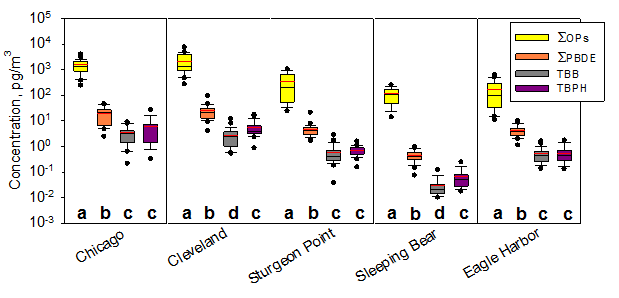Organophosphate esters (OPs) are widely used as flame retardants in various consumer and industrial products, such as plastics, electronic equipment, furniture, textiles, and building materials. In addition, some of these chemicals, mainly the non-chlorinated alkyl phosphates, are used as plasticizers, as well as anti-foaming agents in lacquers, hydraulic fluids, and floor polishes.
OPs are high production volume chemicals and because their consumption is expected to increase due to production and use restrictions placed on brominated flame retardants. For example, the production volumes for tris (1,3-dichloro-2-propyl) phosphate (TDCPP), triphenyl phosphate (TPP), and tris(2-chloro-isopropyl) phosphate (TCPP) in the United States increased from 1-10 million pounds in 1990 to 10-50 million pounds in 2006 [after the so-called pentabrominated diphenyl ether (Penta-BDE) mixture was phased out]. In Western Europe, the consumption of OPs increased 2.5% from 2001 to 2005 and 7.1% from 2005 to 2006.
Data on environmental persistence and toxicity of OPs are limited, but some of these chemicals (especially the halogenated ones) are known to be relatively persistent, mutagenic, carcinogenic, and neurotoxic; they are also developmental and reproductive toxins and skin irritants. OPs were generally more abundant at the urban sites (Chicago and Cleveland) than at the rural and remote sites (Sturgeon Point, Eagle Harbor, and Sleeping Bear Dunes), see Figure.


